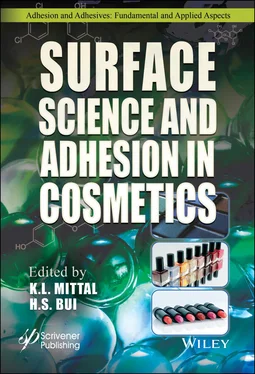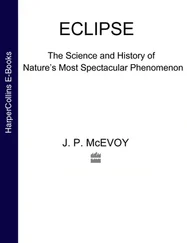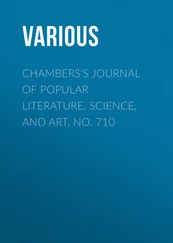Table 1.2 Summary of session objectives in sensory panels [63].
| Session |
Objective |
| Session 1 |
Development of a list of characteristics based on personal perception of the product. |
| Session 2 |
Defining key terms that translate to sensory attributes. |
| Session 3 |
Development and use of scoring system for formulations. |
| Session 4 |
Repeat session 3 for consistency. |
| Session 5 |
A study conducted by Rafferty et al . investigated the ability to predict lipstick sensory products through the use of in vitro testing. Here, 12 different lipstick formulations were studied in regards to sensory perceptions (spreadability, stickiness, opacity, and gloss) with a panel of nine users and in regards to in vitro performance parameters (friction test, application test, tack test, and color development retention test) [65]. From statistical modelling, it was found that the in vitro analysis correlated well with findings from the sensory panel; more specifically, results from the friction test alone were relatable to sensory panel findings in regards to spreadability, stickiness, opacity, and gloss [65]. This is because the friction tests were able to separate the products as creamy, waxy, oily, or sticky from which then explained the adhesion and cohesive properties of each lipstick sample [65].
Ultimately, there is a tradeoff that needs to be made by consumers in regards to achieving the ‘perfect’ long-wear lipstick that is durable and comfortable. Most long-wear lipsticks with claims of 12+ hours of wear tend to be a two-step application process which may be inconvenient for a particular customer base who is always on the go. If a consumer prefers for the product to rank higher in terms of comfort, then the lastingness of the product may suffer. This is because long-wear lipsticks that rank high in comfort typically have a gloss component that introduces moisture to the lip, reducing the tightening and dry sensation experienced by the wearer. These glosses, however, are more likely to be transferred from the lip. Products with better durability tend to be matte films which may feel dry to the consumer.
Although an abundance of methods may be used to help characterize long-wear and transfer-resistant lipsticks, there is still a need to find a better way to correlate in vitro findings with consumer experience. In doing so, the cost and time associated with running consumer panels can be saved and allow for a more agile and successful development process of lipsticks. From the overview of lip surface biophysical properties, there are significant lessons about how lipstick products may interact with the lip surface. Surface properties, such as the ceramide profile of the lip, provide important fundamental knowledge about lip care products aimed at restoration of lip barrier function, while also meeting challenges associated with consumer comfort. Lip biophysical properties, like Young’s modulus and lip extension/contraction during motion, are important considerations for lipstick products that enhance product durability and acceptance. Existing test methods, such as adhesion tests, can be utilized to achieve these goals and act as a better predictive model through the use of appropriate substrates. Factoring in the mechanical properties of both the keratinous layer of the lips and the formulation would assist in enhancing the adhesion whilst also ensuring consumer comfort. Additionally, further investigation into the chemistry of a ceramide based surface will help optimize formulations while opening the possibility to incorporate additional benefits. In turn, these developments will be able to provide further insight into current lipstick formulations whilst also elucidating the benefits of new product innovations.
A special thank you to Jody Ebanks and Frances San George for assisting with technical knowledge and to Qian Zheng and Charbel Bouez for their continued guidance and support.
1. L.H. Yeola, A.D. Maru, and R.K. Surwase, A review on lipstick by using indigenous vegetable wax, World J. Pharm. Pharm. Sci. , 7, 1437–1446(2018).
2. H.S. Bui and D. Coleman-Nally, Film-forming technology and skin adhesion in long-wear cosmetics, in: Adhesion in Pharmaceutical, Biomedical and Dental Fields, K.L. Mittal and F.M. Etzler (Eds.), pp. 141-69. Wiley-Scrivener, Beverly, MA (2017).
3. R. Lochhead and M. Lochhead, Two decades of transfer-resistant lipstick, https://www.cosmeticsandtoiletries.com/research/chemistry/Two-Decades-of-Transfer-resistant-Lipstick-290207561.html(2015).
4. R. El-Khouri, Liquid lipstick compositions capable of forming a multilayer structure after application to lips, US Patent 20170281478, assigned to L’Oreal (2017).
5. P. Bernard, A. Hadasch, and B. Toumi, Long-lasting make-up kit and method, US Patent 20040052745A1, assigned to L’Oreal SA (2004).
6. K. L. Mittal, The role of the interface in adhesion phenomena, Polym. Eng. Sci. , 17, 467–473 (1977).
7. R. Cavazzuti, B. K. Mattox, and M. Swanborough, Moisturizing and long-wearing make-up compositions, US Patent 6444212B1, assigned to L’Oreal (2002).
8. T. Wang, Long wear topical composition, US Patent 8545822B2, assigned to Dermaceutical Products Inc. (2012).
9. J. A. Szweda and C. A. Lutrario, Long wearing lipstick, US Patent 5667770A, assigned to Elizabeth Arden Company Division of Conopco Inc. (1996).
10. S. Foutsizoglou, Anatomy of the ageing lip, Plastic & Maxillo-Facial Surgery and Aesthetic Medicine News , 1–3 (April 2017).
11. M. A. Piccinin and P. M. Zito, Anatomy, Head and Neck, Lips , StatPearls Publishing, Treasure Island, FL (2018).
12. A. Luthra, Shaping lips with fillers, J. Cutan. Aesthet. Surg. , 8, 139–142 (2015).
13. J.G. Betts, P. Desaix, E. Johnson, J.E. Johnson, O. Korol, D. Kruse, B. Poe, J.A. Wise, M. Womble, and K. Young, Anatomy & Physiology , p. 454, Rice University Press, Houston, TX (2013).
14. J. Carey, M. Cohen, C. Curry, K. Devriendt, L. Holmes, and A. Verloes, Elements of morphology: Standard terminology for the lips, mouth, and oral region, Am. J. Med. Genetics Part A , 149, 77–92 (2009).
15. M. Kar, N. B. Muluk, S. A. Bafaqeeh, and C. Cingi, Is it possible to define the ideal lips?, Acta Otorhinolaryngol Ital , 38, 67–72 (2018).
16. E.I. Gubanova and L. Caisey, The Lips: Shapes and Ageing An Aesthetic Atlas , pp. 16-87, Editions Med’Com, Paris, France (2012).
17. M. Satheesh and A. Yadav, Lip: An impressive and idealistic platform for drug delivery, J. Pharm. Res. , 4, 1060–1062 (2011).
18. T. von Arx, K. Tamura, O. Yukiya, and S. Lozanoff, The face – a vascular perspective. A literature review, Swiss Dental J. , 128, 382–392 (2018).
19. C. Crouzet, H. Fournier, X. Papon, N. Hentati, P. Cronier, and P. Mercier, Anatomy of the arterial vascularization of the lips, Surgical Radiological Anatomy , 20, 273–278(1998).
20. K. Takezawa, M. Ghabriel, and G. Townsend, The course and distribution of the buccal nerve: clinical relevance in dentistry, Aust. Dental J. , 63, 66–71(2018).
21. V. F. Ferrario, C. Sforza, J. H. Schmitz, V. Ciusa, and A. Colombo, Normal growth and development of the lips: a 3-dimensional study from 6 years to adulthood using a geometric model, J. Anatomy , 196, 415–423(2000).
22. M.L. Fogel and M.F. Stranc, Lip function: a study of normal lip parameters, J. Plast. Surg. , 37, 542–549 (1984).
Читать дальше












